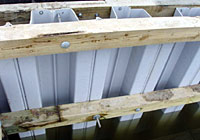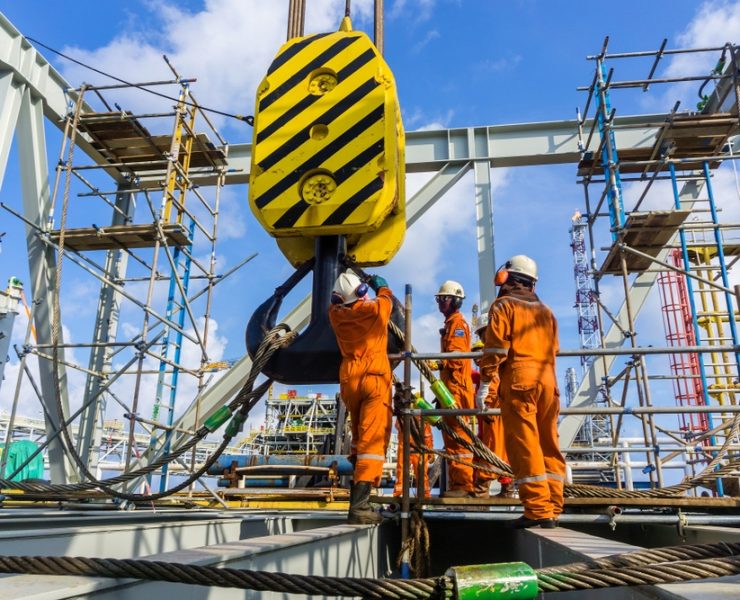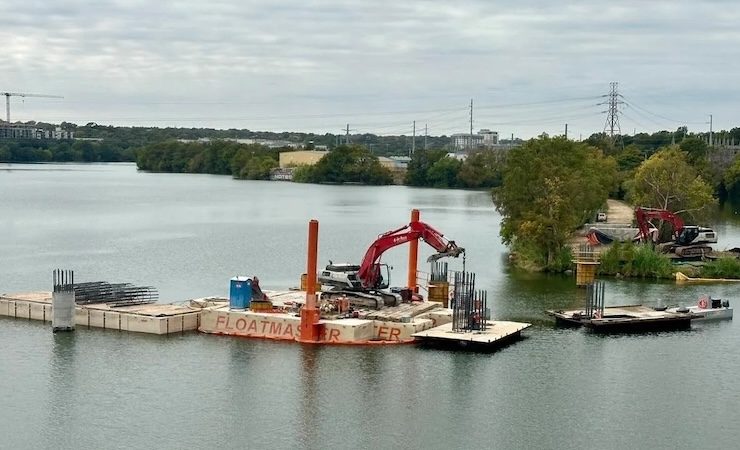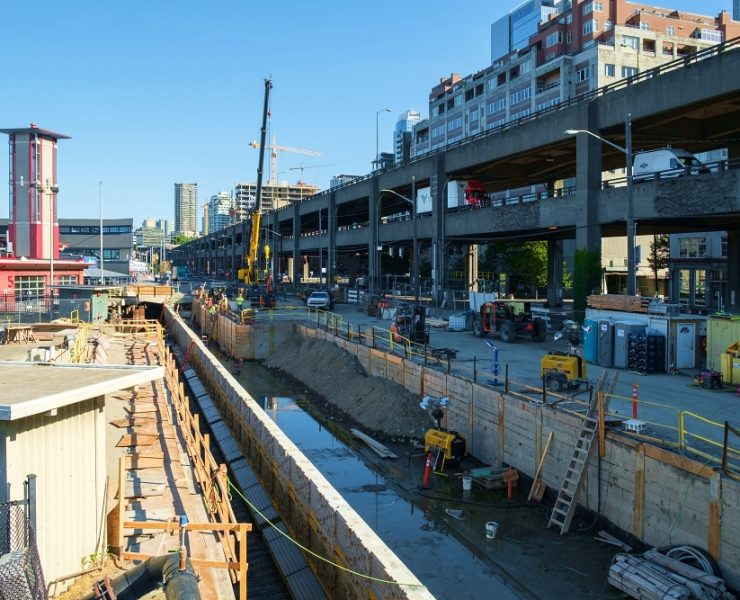Seawall Information From Everlast Synthetic Products
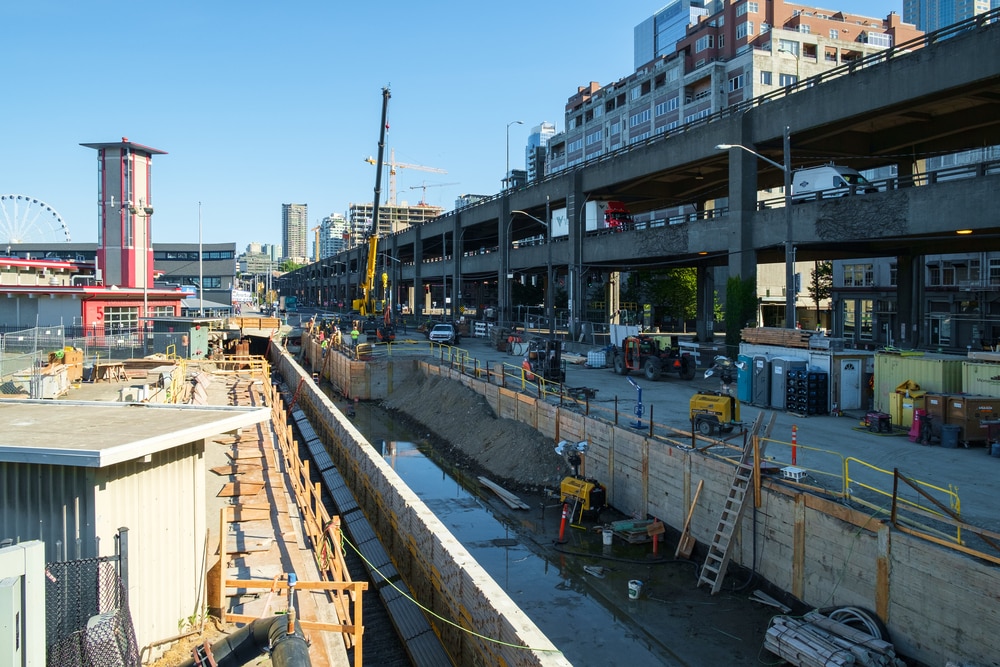
Chapters:
Do not allow your valuable waterfront property to be at risk.
I. Seawall Repair
If you require seawall repair, we advise you start by getting the opinion of a professional. You don’t want to spend a great deal of money on a quick fix only to have to repeat the process in another area soon afterward. We will offer you expert advice on the best remedy for the problem. Let us evaluate your situation before it becomes an emergency.
When it comes to seawall repairs, it pays to do it right the first time.When seawall repair is required, it is something that must be addressed immediately. Procrastination can lead to major erosion of property as the issue will continuously worsen. If that happens, your vulnerability to storms and high tides will increase. Eventually, total collapse may take place with catastrophic results. We are experts in seawall repairs and will inspect your entire waterfront for any other areas requiring remediation. We can make recommendations as to the best course of action.
Different types of materials fail for different reasons and the chances of an additional are high. Typical examples include:
- Wood. This type of construction is subject to decay, borers, which are tunneling creatures that feast on submerged timber, and just plain wearing away from the constant motion of water and sand. When these walls begin to collapse, complete replacement with a superior material like co-extruded vinyl is usually the best solution. Repairs to wood must be repeated and will become a frustration – like shoveling sand against the tide.
- Concrete. Concrete contains iron rebar that begins to rust and eventually loses its reinforcement capability. Concrete will begin to crack and give way from the pressure of the land. Patching concrete below the water does not work. Entire sections must be replaced. Other sections will soon follow. Replacement with a superior and more attractive material, like vinyl, is the best option in most cases.
- Steel. Once steel begins to rust and becomes unsightly and weak there is no reversing the process.
- Aluminum. Like steel, the corrosion to aluminum is irreversible. Contrary to popular belief, aluminum breaks down with repeated exposure to salt water due to a chemical reaction caused by minerals in the water.
Seawall repair is not always the solution to the problem and is often a Band-Aid on a critical wound. The repaired area may hold up for a year or two, but another area of the wall is likely to degrade later. It becomes an ongoing maintenance issue that will eventually lead to futility. If your wall is relatively new and was damaged by a specific isolated event, repair might be called for. We as experts in marine engineering and application are best qualified to make that determination.
When you need seawall repair, contact us first. One of our engineers will meet with you to analyze your individual situation. He will also show you the latest in co-extruded sheet vinyl products that have a 50 year warranty to protect your property. He will perform a soil analysis and an engineering evaluation of your current seawall. Changes in the general lay of the land along the waterfront can make a difference in the adequacy of a structure built many years ago. Loss of wetlands has caused higher tides in many areas; a barrier constructed 20 years ago may no longer offer adequate protection. Why repair something if it is due to fail?
The best seawall repair alternative is a co-extruded, interlocking, vinyl sheet product. These panels are made from an ultra UV-resistant cap layer that is applied to an extra strong and resilient vinyl layer. This produces a colorfast, extremely attractive product that can be driven deep and then capped to provide a bulkhead of everlasting beauty and superior strength. It will not corrode, decay, fade, crack or change in any way – and it is guaranteed for 50 years.
Let us show you the best options before you consider sinking money into a declining structure.
Call us for an evaluation at 1-800-687-0036
Do not put your valuable waterfront property at risk!
Everlast Synthetic Products manufactures and installs seawall and many other marine products across the entire US and worldwide.
A vinyl seawall is a major improvement to your property, and it’s something that requires good planning. You will be adding a structure that will be protecting your land for decades to come, so it’s important to get it right. One of the primary considerations is the material used to construct the seawall. There are several to choose from, but we feel that a vinyl seawall is by far the best option.
First, here are some of the options that have been commonly used in the past but are now obsolete for various reasons:
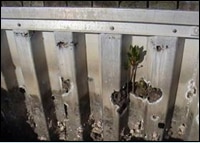 Aluminum – Aluminum is subject to galvanic corrosion (also known as electrolysis). This just means that it will corrode. Aluminum also will rust when it’s put in salt water.
Aluminum – Aluminum is subject to galvanic corrosion (also known as electrolysis). This just means that it will corrode. Aluminum also will rust when it’s put in salt water.
Steel – Steel is also subject to the corrosive nature of salt water.
Wood – Obviously wood will not rust, but it has problems of its own: marine borers. These are little animals found in the sea (some are teredos, some are limnoria). When they come into contact with wood, they live up to their name: they bore into it. These little creatures eat wood (but they can’t eat a vinyl seawall).
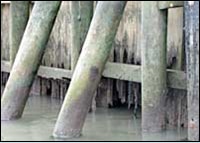 Concrete – Many people assume that concrete must be a great material for a seawall. It’s not. Concrete is porous, so the salt water can seep into it. And guess what is in the center of the concrete: steel reinforcements. So you are back to the problem of the steel being corroded by the water. It will happen; it’s just a matter of time.
Concrete – Many people assume that concrete must be a great material for a seawall. It’s not. Concrete is porous, so the salt water can seep into it. And guess what is in the center of the concrete: steel reinforcements. So you are back to the problem of the steel being corroded by the water. It will happen; it’s just a matter of time.
It should be pretty clear that those materials are no longer effective due to the factors listed. So what makes a vinyl seawall so much better? Here are several reasons:
- A vinyl seawall is not affected by marine borers. Those little critters love to come across a big wood seawall and latch on for an extended meal. But when the seawall is made of vinyl, it’s like putting up a sign for them that says “Buffet closed”. They have no interest whatsoever in boring into vinyl.
- It’s financially more efficient. Since vinyl has a much longer effective life than those other materials, it makes better sense from an investment standpoint.
- Your vinyl seawall is manufactured to be resistant to the ultraviolet rays of the sun. Other materials, wood especially, deteriorate over time in part due to the sun’s relentless radiant energy and UV rays. Vinyl is designed to withstand that.
- Vinyl will not change in appearance for a very long time. Wood has that rich coloring, and steel looks bright and shiny when first installed. However, the color fades and the nice finish get tarnished before long. It can be a little disappointing to see what was once a beautiful wood seawall begin to fade and decay in a relatively short period of time. Vinyl tends to remain in its initial attractive state longer than other materials.
- A vinyl seawall is generally easier to install. Since vinyl is manufactured to very exacting standards, it does not have the natural imperfections and deformities found in wood. It is classified as “impact resistant”. Ease of installation may not seem like a big selling feature from the homeowner’s point of view, but it is. The sooner we can get your seawall installed, the sooner the equipment is off your property. Also, a faster installation means lower labor costs.
- Finally, vinyl has a better warranty. We know it will last longer, so it makes sense that the manufacturer’s warranty will cover it for a longer period of time. You will have a warranty covering a full 50 years from the date of purchase.
Seawall construction is growing quickly as a popular way to improve residential and commercial properties that are bordered by water. We are finding that many property owners are seeing the advantages to having seawall construction done in order to protect the environment and their own property.
One of the primary environmental concerns today is the erosion of land. As sea levels rise, coastal erosion increases. People are more aware of this now on a social consciousness level as we become more educated about the interaction of land and water n our planet. However, coastal homeowners are particularly aware of the effects of erosion. For them, it has a very direct effect on the value of their real estate. This is where seawall construction can be a very sound investment.
Primary Reasons Homeowners Hire a Seawall Construction Contractor
- The prevention of land erosion – If a property includes land that is bordered by water (whether ocean, gulf or lake), it’s in everyone’s best interest to keep that border exactly where it is. However, water doesn’t always move with our best interest in mind. There is a tendency for the water to push back against the land, and over time there is more water and less land. This is seen more prominently in property that borders the ocean, due to the constant tidal movement. However, land that lies next to any large body of water can experience this, particularly after some inclement weather causes a storm surge. Seawall construction puts a barrier in front of the land, so the movement of the water has virtually no effect.
- The prevention of flooding – In addition to the gradual erosion of land, water can cause a much more urgent and damaging situation: flooding. After an extended period of rain, water levels can sometimes reach heights that are not commonly seen. Since these water levels are not experienced regularly, the tendency is to not be fully prepared when it happens. If the water gets higher than the land, there is obviously nothing left to stop it from coming into your home. Of course, the further away your house is from the waterline, the less likely you are to have a problem. But if the water surges sufficiently, there is really nothing to stop it from entering your home and causing untold damage. Those homes that have seawall construction can hold out much longer before coming into contact with water, and are therefore much less likely to experience any damage. If the water does come in because of extraordinarily high sea levels, the damage can at least be minimized by providing the homeowner extra time to prepare.
Of course, we should point out that it is not just homeowners that have concerns about keeping a clear division between water and land. Owners of commercial buildings obviously have their property’s safety in mind as well. In fact, a commercial building may be full of expensive machinery and equipment that must be kept dry, and would be difficult and/or costly to replace if the building were to experience a flood problem. In addition, flood cleanup and water removal can be a complicated process. This is not only an expensive inconvenience; it also can mean that the business is closed while the recovery process is completed, so the company experiences a loss of revenue for that period of time. In many cases, a seawall construction could have prevented (or greatly minimized) the financial and emotional toll that can really hurt a business.
IV. Seawall Installation Guidelines
1. Always set a drive guide or template to assure a straight, firm surface to drive sheets against. NEVER ATTEMPT TO DRIVE SHEETS ALONG A STRING LINE ONLY. Run a string line and set temporary posts (usually 4 x 4 posts) where the completed wall will stand. This drive guide (generally a 4 x 6 or 6 x 6) is tack nailed, c clamped, or screwed into the temporary posts. This drive guide can become part of the permanent wale/cap system for a wood capped wall.
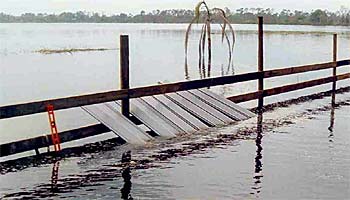
2. Thread a pair of sheets and drive in pairs. This will decrease seawall installation time as well as help keep the sheets plumb and straight. Upon reaching desired embedment, screw a lag screw into the flange of the leading Sheet. NOTE: IT IS CRITICAL TO GET THE 1ST PAIR OF SHEETS STRAIGHT AND PLUMB AS THE REST OF THE WALL WILL FOLLOW SUIT.
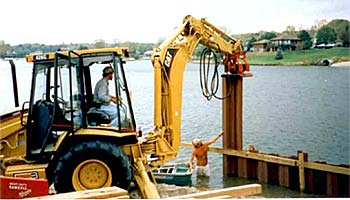
3. Be sure to level each pair of sheets in both the vertical and horizontal directions and continue driving down the length of the wall. It is recommended to lead with the male lock so that soil and debris can easily escape through the female.
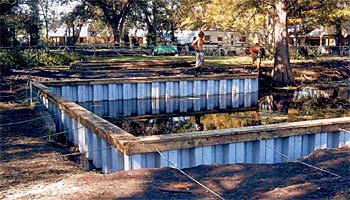
6. Complete the process by fastening the top cap board. This board is generally a 2 x 12 pressure treated board or deck boards that run perpendicular to the walers.
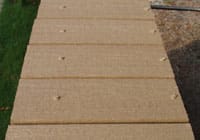
Inquire today about accessories for your seawall that E.S.P offers. We inventory a large supply of both hot dipped galvanized and stainless steel fasteners, tie rods, carriage bolts, nuts, washers, and all thread rod. Let Everlast Synthetic Products be your one stop depot for all of your seawall installation needs.
What are the common materials used in seawall construction, and why is vinyl considered a superior choice?
Common materials include wood, concrete, steel, and aluminum, but vinyl is preferred due to resistance to marine borers, UV resistance, long lifespan, ease of installation, and a 50-year warranty.
What steps should be taken for effective seawall installation, and why is professional evaluation important for seawall repair?
Installation involves driving sheets in pairs, leveling, securing tie rods to a deadman, and adding a top cap board; professional evaluation is crucial for repair to avoid ongoing maintenance issues and ensure long-term protection.















